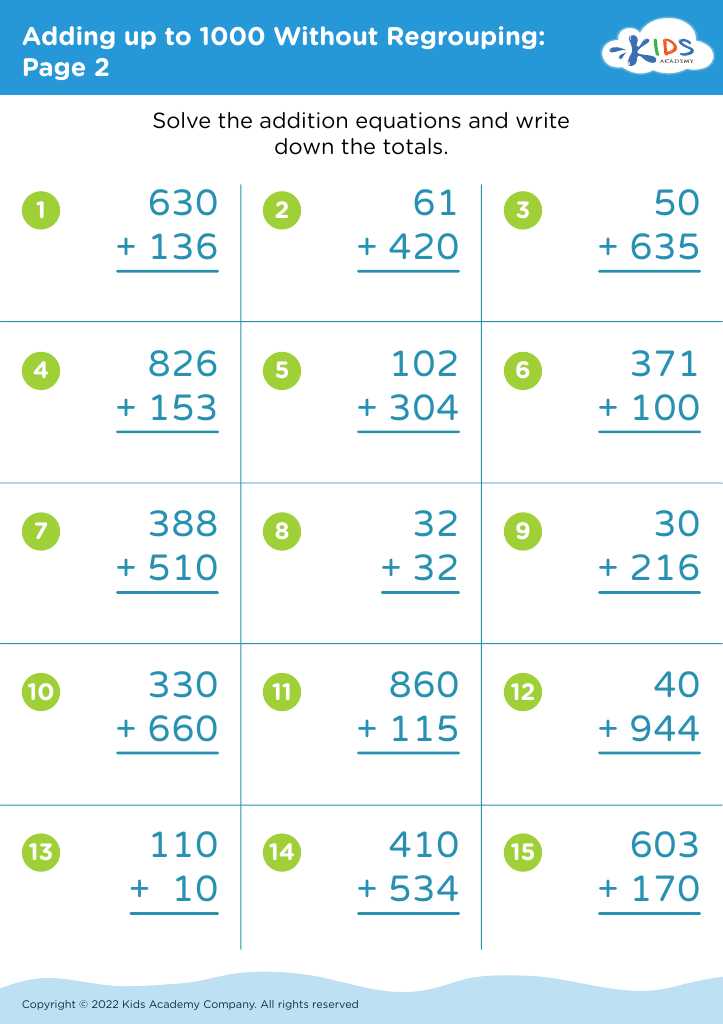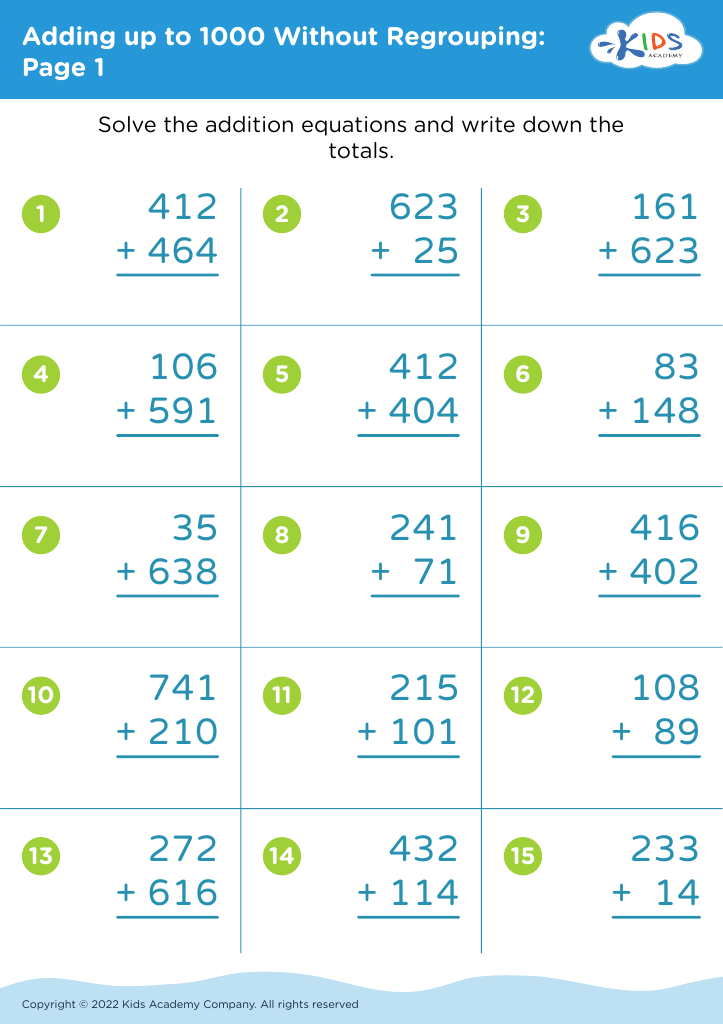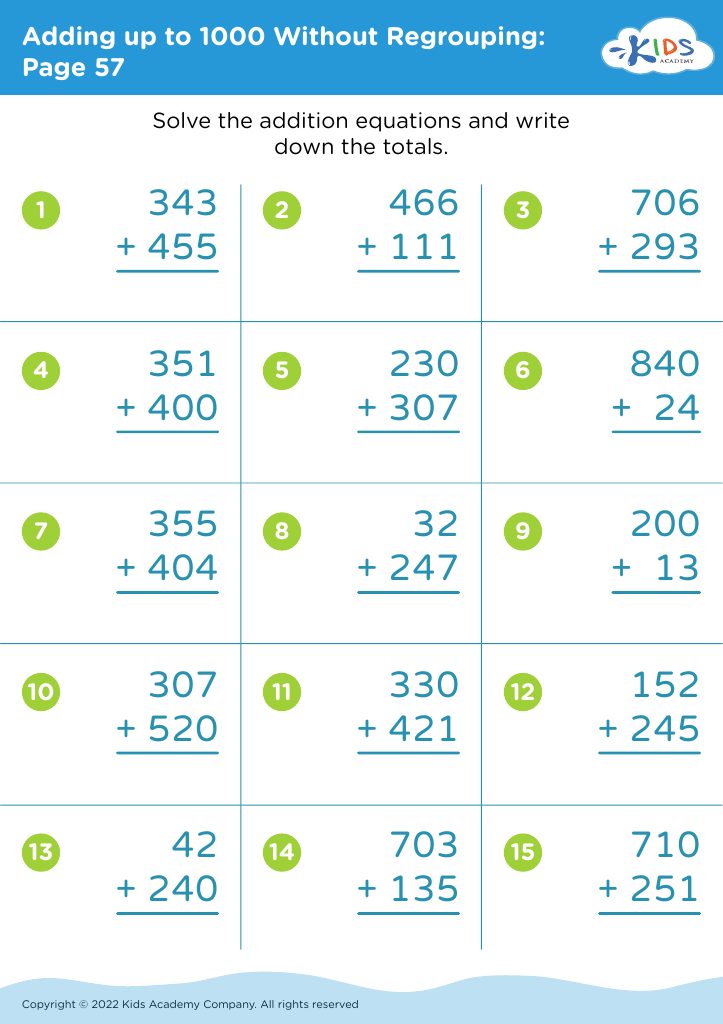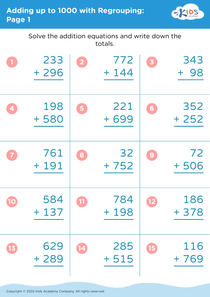Shape Recognition Adding up to 1000 Without Regrouping Worksheets for 9-Year-Olds
3 filtered results
-
From - To
Discover our engaging "Shape Recognition Adding up to 1000 Without Regrouping Worksheets" designed specifically for 9-year-olds! These worksheets combine math and visual learning, helping children enhance their addition skills without regrouping while also reinforcing their understanding of shapes. Through a variety of interactive exercises, kids will identify shapes as they complete addition problems, boosting their confidence and problem-solving abilities. Perfect for classroom use or at-home practice, these worksheets cater to different learning styles and encourage critical thinking. Help your child excel in math and shape recognition today with our thoughtfully crafted resources!
Shape recognition and adding protocols without regrouping are essential skills for 9-year-olds, laying foundational blocks for future learning in mathematics and critical thinking. Parents and teachers should prioritize shape recognition as it fosters spatial awareness and visual discrimination among children. Recognizing different shapes helps in understanding geometry, which is vital not just in math but in everyday activities, like following directions and identifying objects in their environment.
Furthermore, mastering addition without regrouping enhances children's arithmetic skills, providing a strong grasp of number sense. This fundamental operation promotes confidence in handling numbers, crucial for advanced mathematics later on. As children learn to add numbers to reach sums up to 1000, they develop strategies for mental calculation that enhance their problem-solving abilities.
Moreover, these skills tie into cognitive development, as children learn to categorize and interpret information. It cultivates an analytical mindset that enables them to approach complex problems logically. Engaging in activities centered around shape recognition and addition fosters fine motor skills and cognitive flexibility.
Overall, helping 9-year-olds develop these skills not only prepares them for academic success but also supports their overall cognitive growth, essential for navigating the future intricacies of mathematics and the world around them.
















